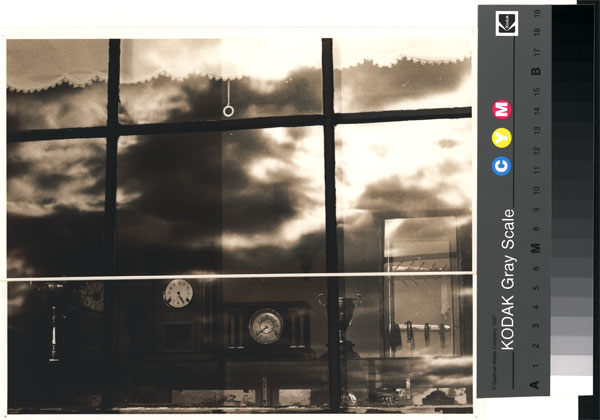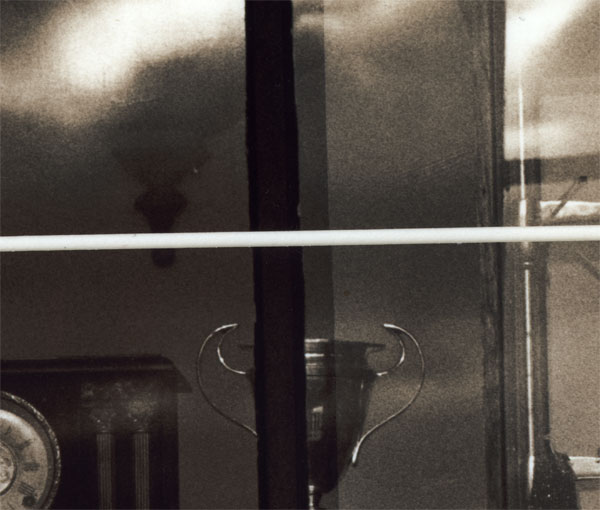
Russel Kwan
In January 2003, I decided to test one of my prints for both lightfastness and exposure to the general environment to see just how much abuse it could take. There has been much written lately about the theoretical longevity of many materials, particularly new digital materials, so I wanted to conduct a direct, grass-roots torture test of my own traditional silver-gelatin prints. My original idea was to test a print to destruction, but I halted the test at one year because I decided to preserve the surprisingly compelling results.
Here’s my process: I made a standard exposure test strip print on a sheet of 8x10 Ilford Warmtone Fiber-Based, Semi-Matt paper, archivally processed and dual-toned in selenium and sulfide. This print was cut in half, and one half was dark-stored in our fireproof media safe. I taped the other half, unmounted, unprotected, image facing outside, to the inside of a south-facing window that receives direct sunlight most of the day. The image went up Jan 3, 2003 and I took it down Jan 20, 2004 – the print received more than one full year of direct sunshine. In addition, we leave that particular window open from May to September, because the room gets very hot – so the print also received about 5 months exposure to summer humidity, ozone and other air pollutants found in our city.
Here’s the result: I’ve scanned both halves of the print, along with a Kodak 1/3 stop reflection step reference on my Microtek 9800XL scanner (in one pass), and presented it here without any image processing other than resizing for the web, and conversion to jpeg. When examining the original print halves, it’s pretty hard to see any differences at all, although the very sharp eyes of one of my gallerists detected a slight yellowing of the paper base in the tortured half. The scanner revealed a very small decrease in dMax (about 1%, or 1/9 of a stop when compared to the Kodak reference). Midtones and highlights have not changed at all. The scanner cannot reproduce the slight yellowing of the paper base.


Google Analytics